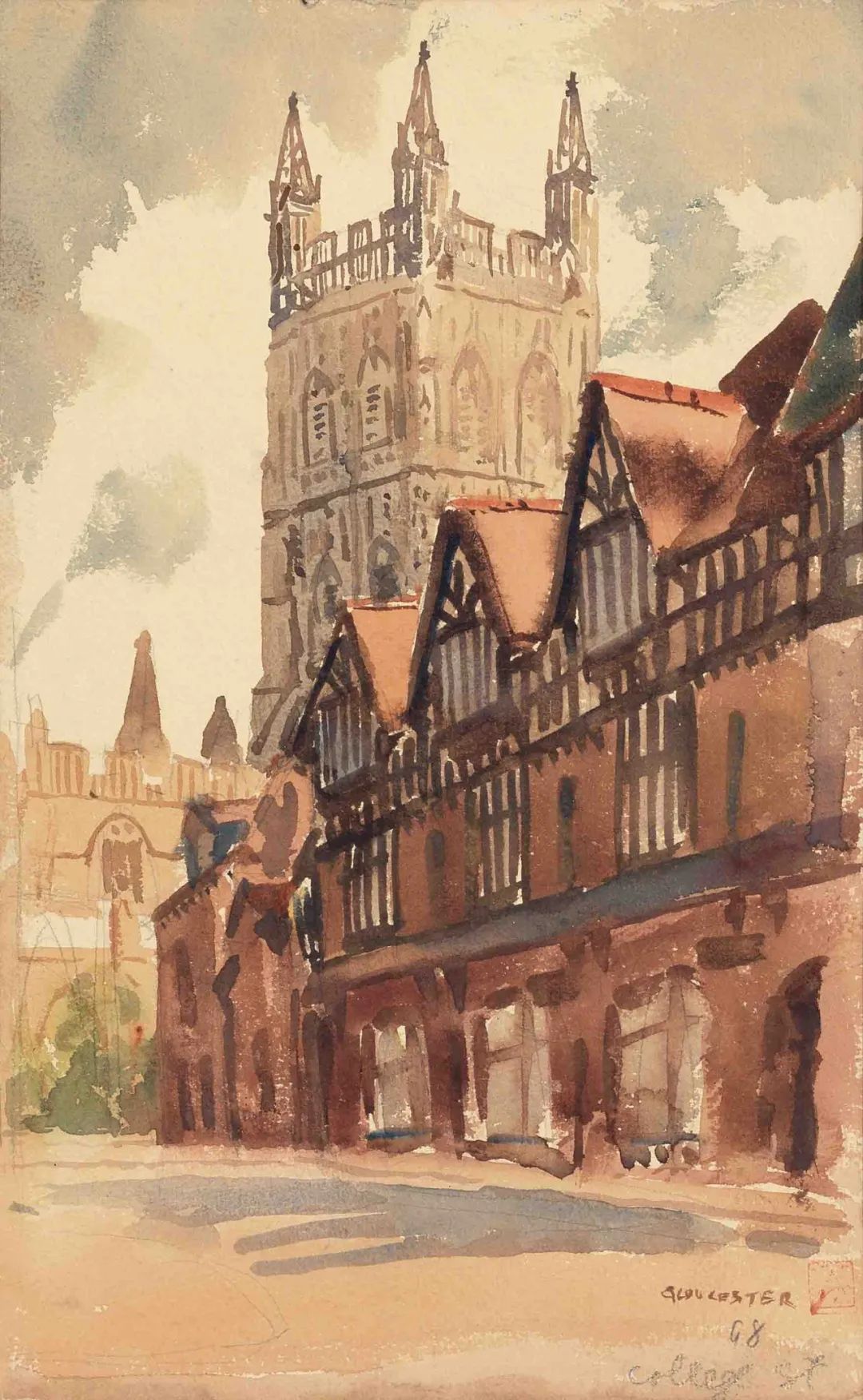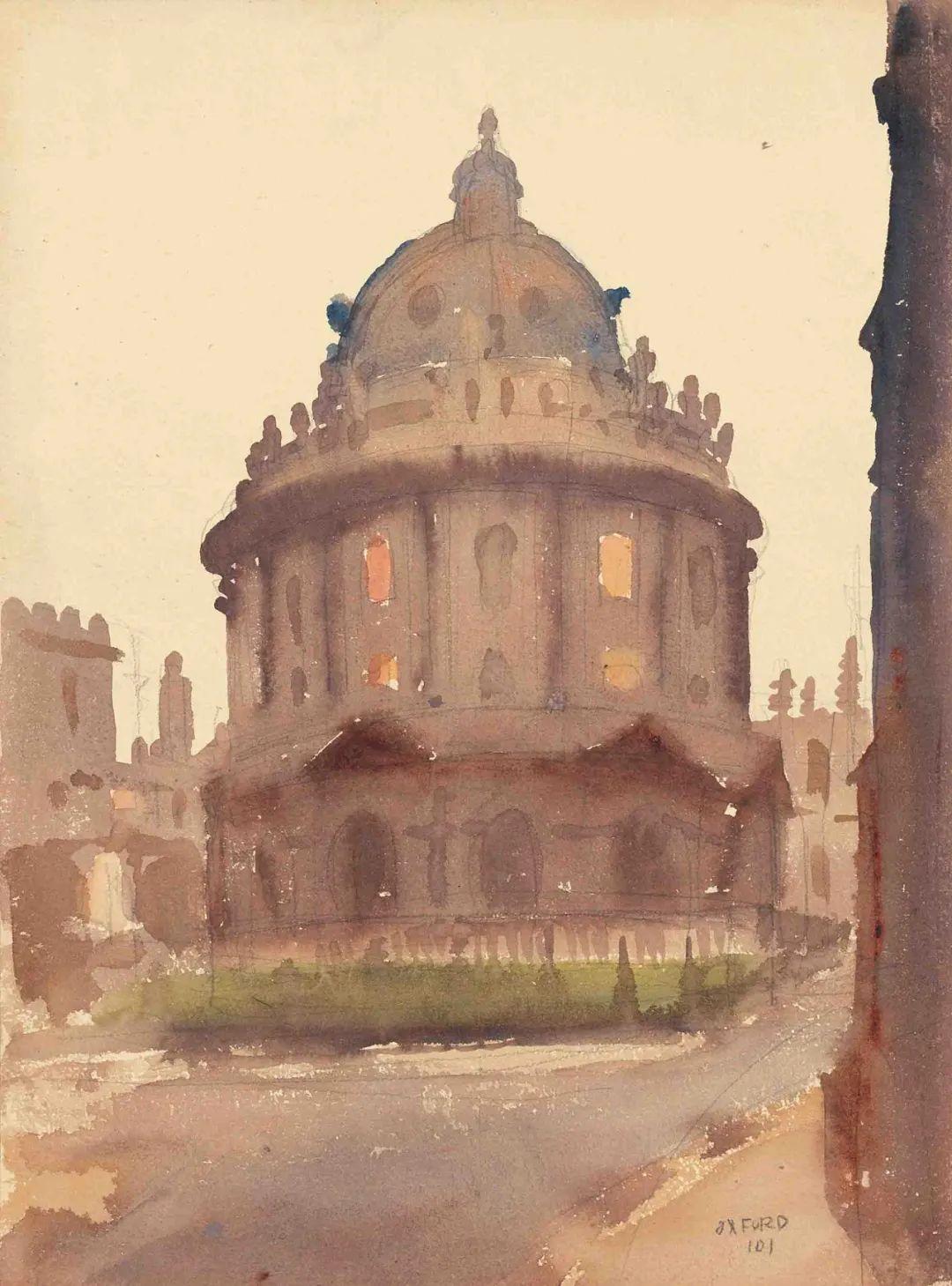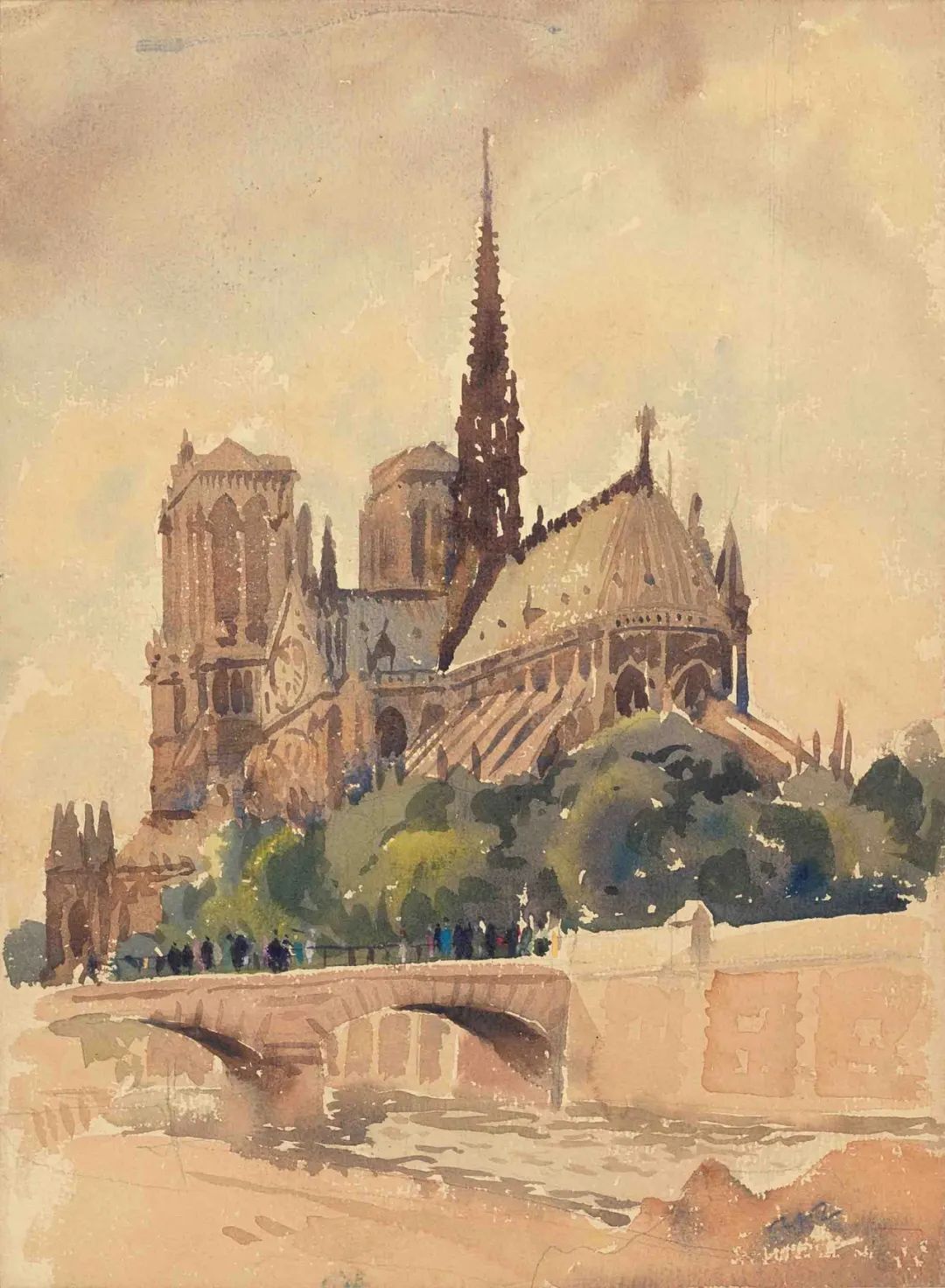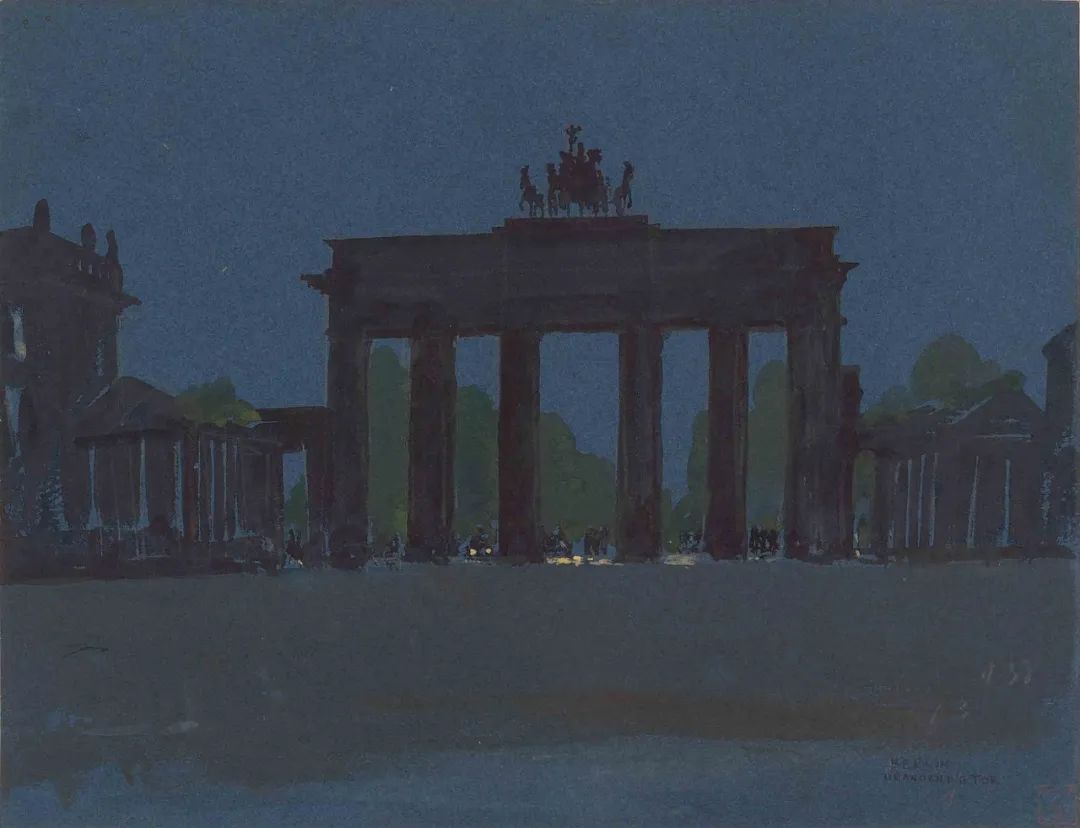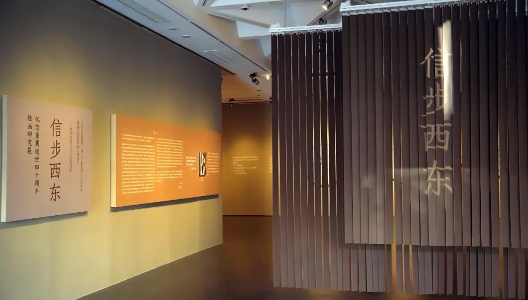A Leisurely Stroll from the East to the World - Painting Research Exhibition in Commemoration of the 40th Anniversary of Tong Jun's Death

- show time:2023-12-22 to 2024-02-26
- Organizer:Southeast University, Tong Jun Memorial Hall and Beijing Fine Art Academy
- venue:Beijing Fine Art Academy
A Leisurely Stroll from the East to the World - Painting Research Exhibition in Commemoration of the 40th Anniversary of Tong Jun's Death, jointly organized by Southeast University, Tong Jun Memorial Hall and Beijing Fine Art Academy, opened at the Art Museum of Beijing Fine Art Academy on December 22, 2023. Tong Jun is a renowned Chinese architect and architectural educator and also an outstanding artist. His paintings can touch the hearts of people and embody his unique perspective and critical thinking as an architect. The exhibition features more than 60 watercolor paintings and sketches that Tong created during a tour of Europe in 1930. The audience followed the footsteps of this famous architect and got a glimpse of European buildings, culture and natural scenery of nearly a century ago, immersing themselves into his world of art. The show was added to the 2023 National Art Museum Young Curators Support Program launched by the Ministry of Culture and Tourism.
I. Little-known Master
Tong Jun has been hailed as a first-generation architect and architectural educator in modern China. Tong is recognized as one of China's "four great architects", alongside Yang Tingbao, Liang Sicheng and Liu Dunzhen. He led the design of more than 120 buildings, including the former Diplomacy Ministry building in Nanjing and the Metropol Cinema in Shanghai. He has long been committed to the theoretical research of architecture and landscape architecture, making groundbreaking contributions. Tong is known as the first person to study classical Chinese gardens in modern times. However, Tong is little known to the outside world as he was indifferent to fame and fortune and remained true to himself, and even fewer people know what he accomplished.
Since 2007, Beijing Fine Art Academy has been curating the Art Series of 20th Century Chinese Artists. It adopted an approach that the “falling of one leaf heralds the coming of autumn” to gain insights into the development of art, the evolution of culture and even the changes of society in an era from point to plane. Exhibitions for 60 artists have been curated so far. The Painting Research Exhibition in Commemoration of the 40th Anniversary of Tong Jun's Death, held in a case-within-case way, focuses on architectural paintings like watercolors and sketches that Tong created during his tour of Europe in 1930, acquainting visitors with the well-known architect. This gives visitors a chance to appreciate his artistic paintings, experience his research and critical thinking abilities and recognize his contributions to Chinese architecture and landscape architecture under the broad vision of “finding out about China with the knowledge of the world”. Tong Jun is the first architect whose works were on display in an exhibition that has been included in the Art Series of 20th Century Chinese Artists.
The exhibition is themed on A Leisurely Stroll from the East to the World, where “a leisurely stroll” originated from the Chinese idiom “stroll leisurely in a courtyard”, which depicts Tong’s relaxed and pleasant state and focuses on experience and exploration during sketching in the grand tour. “From the East to the World” refers to a locality, revealing the inner relationship between Tong's grand tour to Europe in 1930 and his outstanding contributions to Chinese architecture, landscape architecture and other fields after his return. He, beyond East and West, fused past and present and blazed a path of exploration of integrating the world with China between architecture and landscape architecture.
II. Grand Tour and Architectural Paintings
A study tour is a very important experience in the career of an architect, because if he/she wants to truly learn about the iconic buildings in the textbook, and contact and experience Western civilization, the architect must go to the cradle of European civilization, immerse himself/herself in the reality of classical art, and fully absorb the rich experience conveyed by cultures. This form of travel with a long history is called grand tour. Many big-name architects in history have had such experience, which has had a profound influence on their architectural careers. In April 1930, Tong Jun embarked on a 4-month grand tour to more than a dozen countries, including Britain, France, Belgium, the Netherlands and Germany. His paintings, diaries and photographs record the splendid culture of Europe, the magnificent traditional architecture and the burgeoning modern architecture, for which he created more than 200 valuable sketches.
These sketches can neither be simply seen as architectural paintings, nor photographic images produced by a camera, but should be regarded as a strict ideological operation of an architect - "If required to observe and understand the line, plane and solid of a building, one must draw them by himself/herself, by which one can bear them in mind (Tong Jun)." It signifies an experience of the architect to capture the charm of the building and inspiration in a very short period of time and also embodies the comprehensive quality of the architect. In the current era of computer simulation and program modeling, this tradition of the architect has gradually been forgotten and even questioned. The case study of Tong’s architectural painting art is particularly significant.
Therefore, the exhibition not only presents the paintings of Tong Jun, but also suggests his scope of view via these works. Why did he turn to emerging modernist architecture, instead of classical architecture, during his grand tour. This influenced Tong pursuing Chinese architectural modernism as a professional architect after he returned to China. His ideological trajectory: In the face of classical and emerging architecture, what Tong observed and thought. He compiled comments and views into books at a rigorous academic attitude. His architectural background: Attempts were made to restore and improve the background information of the European buildings in the works of Tong. The exhibition comes in the form of documents depicting the trajectory of his life and painting career, as well as his further exploration of modernist architecture and landscape gardens after the return from his grand tour, with the aim to show an experienced and whole Tong Jun.
III. Cornerstone, Dome and Stacked Stone
The three sections of the exhibition were named after different structures of the building. The first and third sections were set up on the first floor of the exhibition hall of the Art Museum, mainly introducing Tong to the audience. To put it simply, the Cornerstone -- Origin of Painting section focuses on Tong’s paintings, course works, award-winning works and teachers' works during his study abroad, indicating that Tong received complete beaux-arts architecture education at the University of Pennsylvania, classical aesthetic training and watercolor teachers' guidance, which are the early accumulation of his outstanding painting achievements. The Stacked Stone -- Glimpses of Gardens in Eastern China section displays part of Glimpses of Gardens in Eastern China, a book reflecting Tong's academic achievements, as well as the manuscripts, surveying and mapping drawings, black and white photos left during the writing of the book. All these shed light on his exploration of the root culture of the Chinese nation after his grand tour to the west, and his outstanding contributions to the study of classical Chinese gardens. On the second floor of the exhibition hall is the second section called Dome -- Grand Tour Paintings, which demonstrates Tong's diaries and sketches in his travel order in that year, and supplements the knowledge background of select representative buildings and scenery in architecture, art history and other aspects according to clues in his diaries, allowing the audience to enter the world of the master of art as much as possible.
The exhibition runs through February 26, 2024.
